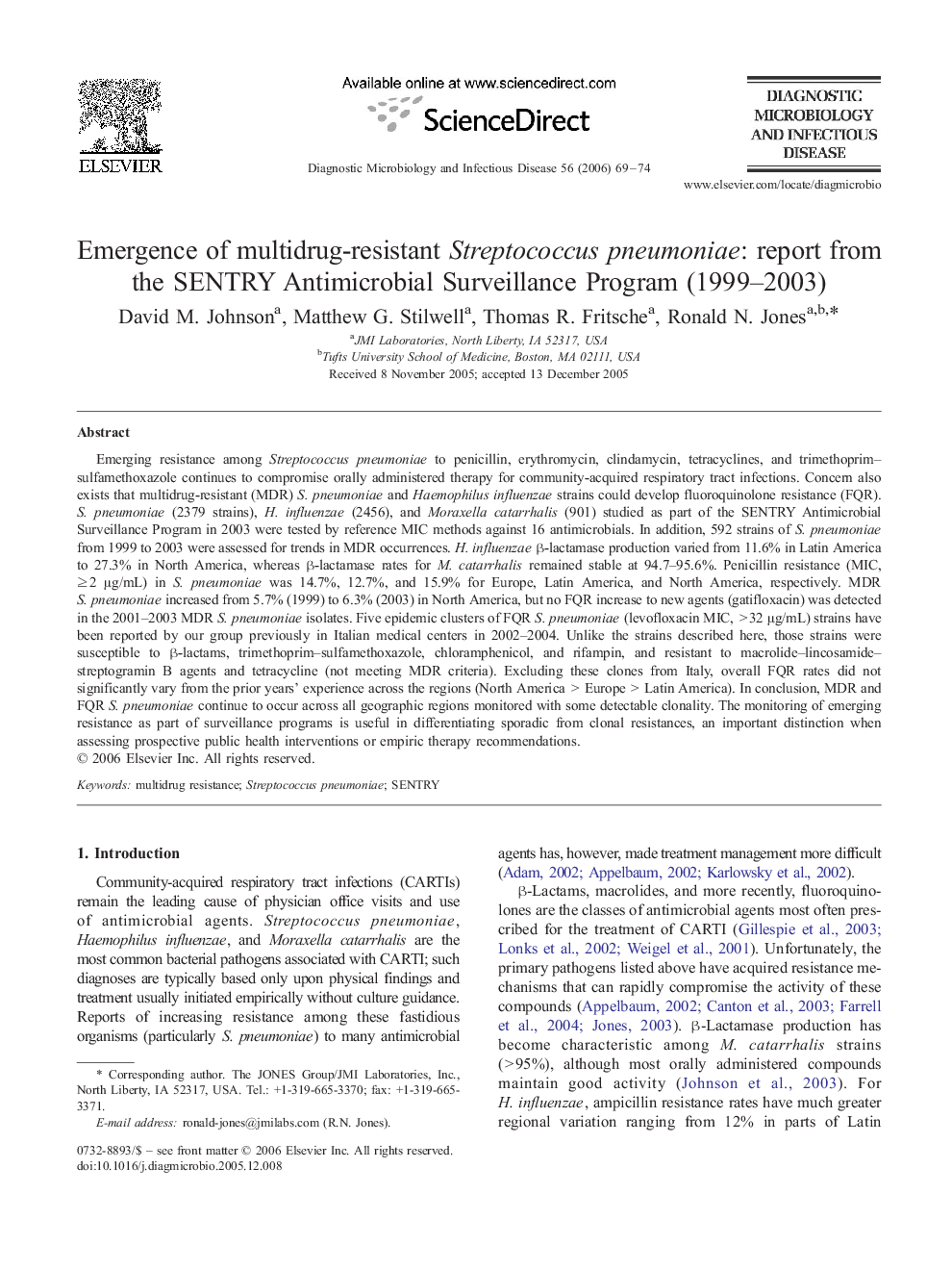| Article ID | Journal | Published Year | Pages | File Type |
|---|---|---|---|---|
| 3348466 | Diagnostic Microbiology and Infectious Disease | 2006 | 6 Pages |
Emerging resistance among Streptococcus pneumoniae to penicillin, erythromycin, clindamycin, tetracyclines, and trimethoprim–sulfamethoxazole continues to compromise orally administered therapy for community-acquired respiratory tract infections. Concern also exists that multidrug-resistant (MDR) S. pneumoniae and Haemophilus influenzae strains could develop fluoroquinolone resistance (FQR). S. pneumoniae (2379 strains), H. influenzae (2456), and Moraxella catarrhalis (901) studied as part of the SENTRY Antimicrobial Surveillance Program in 2003 were tested by reference MIC methods against 16 antimicrobials. In addition, 592 strains of S. pneumoniae from 1999 to 2003 were assessed for trends in MDR occurrences. H. influenzae β-lactamase production varied from 11.6% in Latin America to 27.3% in North America, whereas β-lactamase rates for M. catarrhalis remained stable at 94.7–95.6%. Penicillin resistance (MIC, ≥2 μg/mL) in S. pneumoniae was 14.7%, 12.7%, and 15.9% for Europe, Latin America, and North America, respectively. MDR S. pneumoniae increased from 5.7% (1999) to 6.3% (2003) in North America, but no FQR increase to new agents (gatifloxacin) was detected in the 2001–2003 MDR S. pneumoniae isolates. Five epidemic clusters of FQR S. pneumoniae (levofloxacin MIC, >32 μg/mL) strains have been reported by our group previously in Italian medical centers in 2002–2004. Unlike the strains described here, those strains were susceptible to β-lactams, trimethoprim–sulfamethoxazole, chloramphenicol, and rifampin, and resistant to macrolide–lincosamide–streptogramin B agents and tetracycline (not meeting MDR criteria). Excluding these clones from Italy, overall FQR rates did not significantly vary from the prior years' experience across the regions (North America > Europe > Latin America). In conclusion, MDR and FQR S. pneumoniae continue to occur across all geographic regions monitored with some detectable clonality. The monitoring of emerging resistance as part of surveillance programs is useful in differentiating sporadic from clonal resistances, an important distinction when assessing prospective public health interventions or empiric therapy recommendations.
